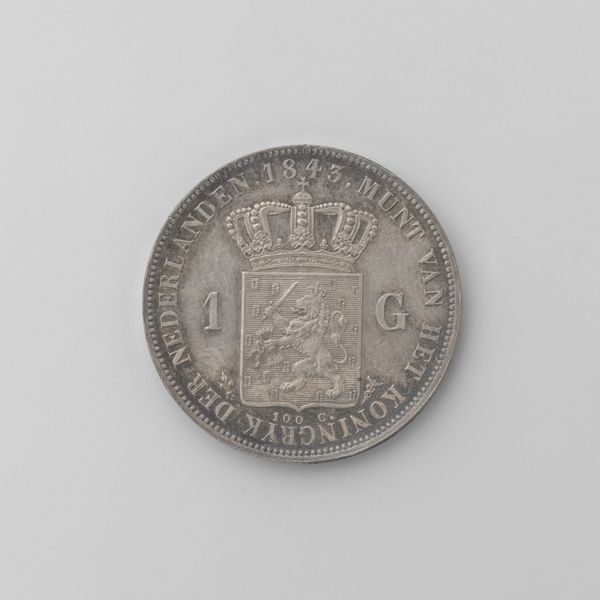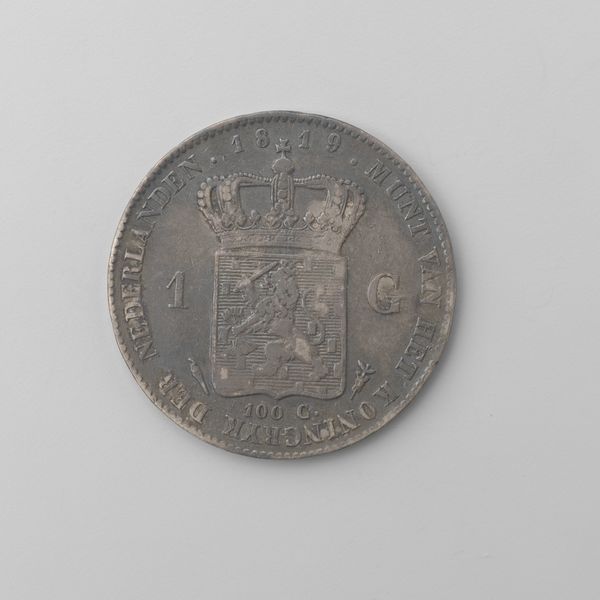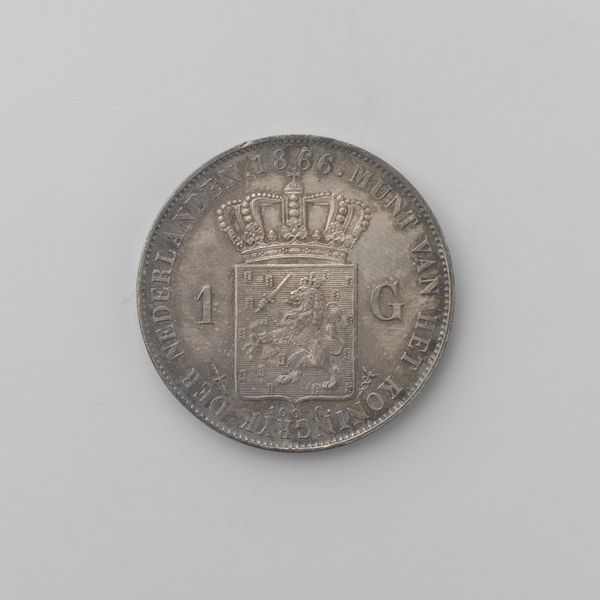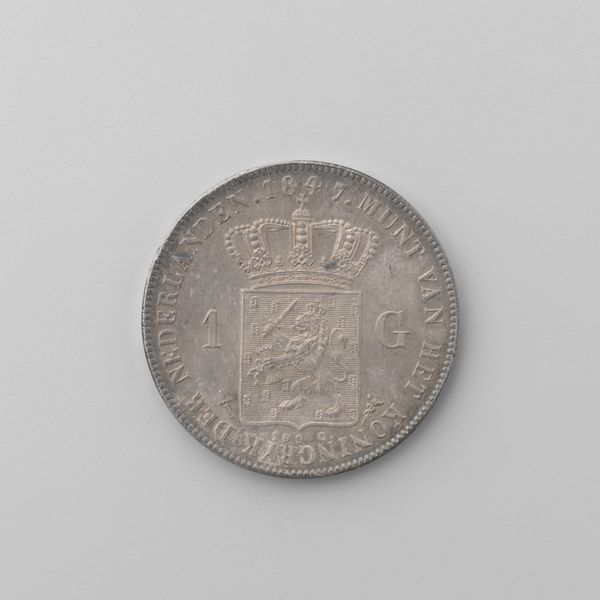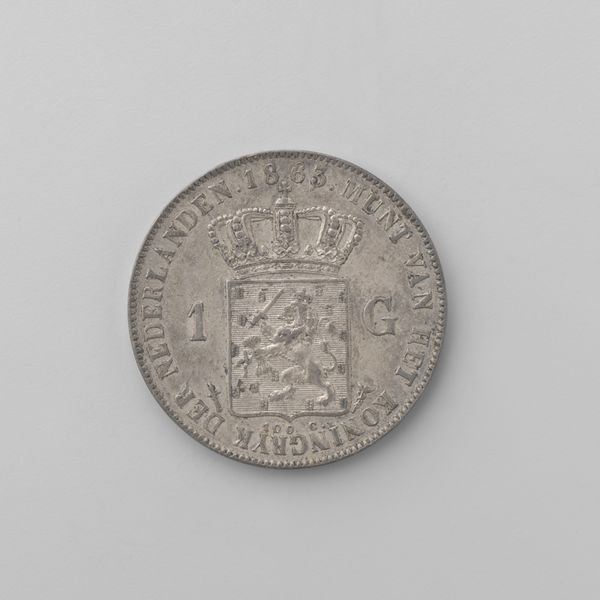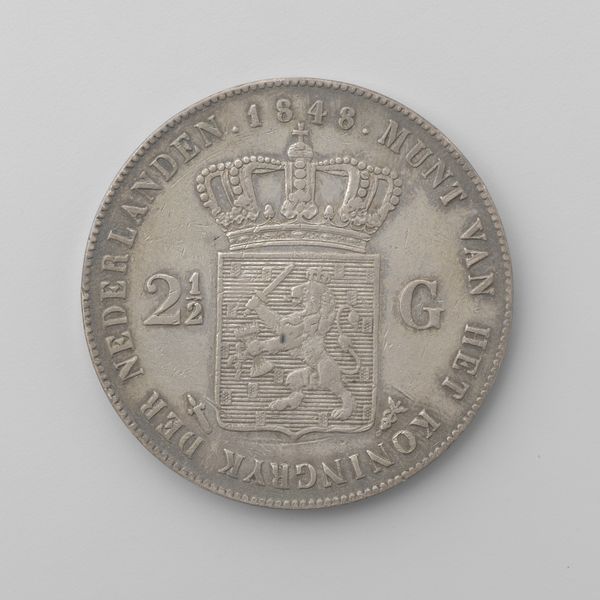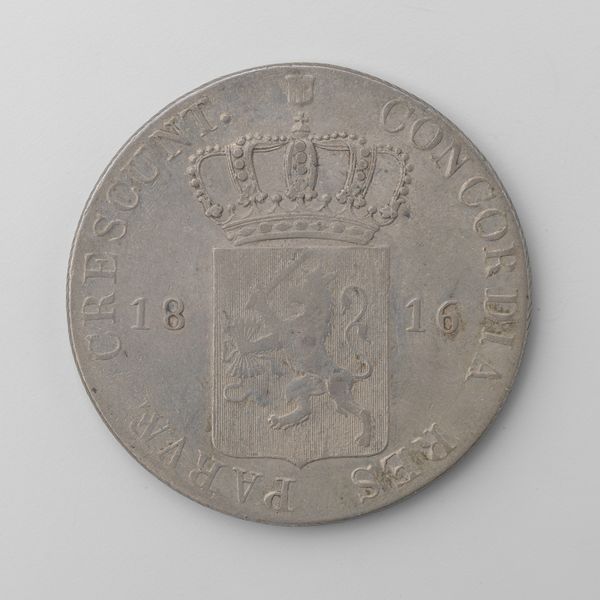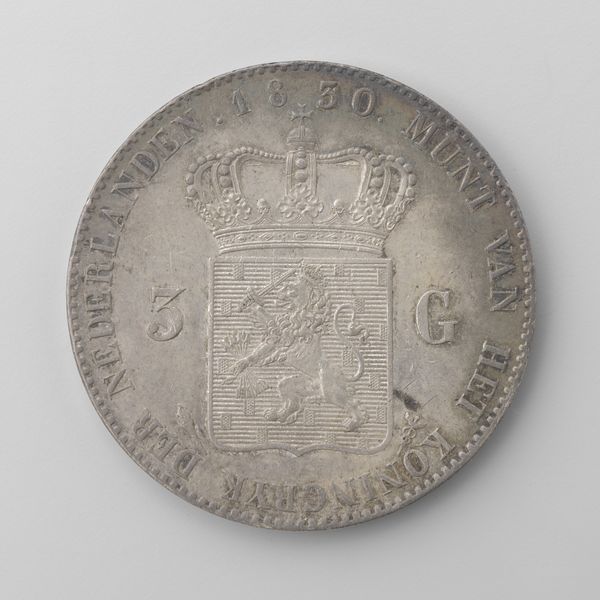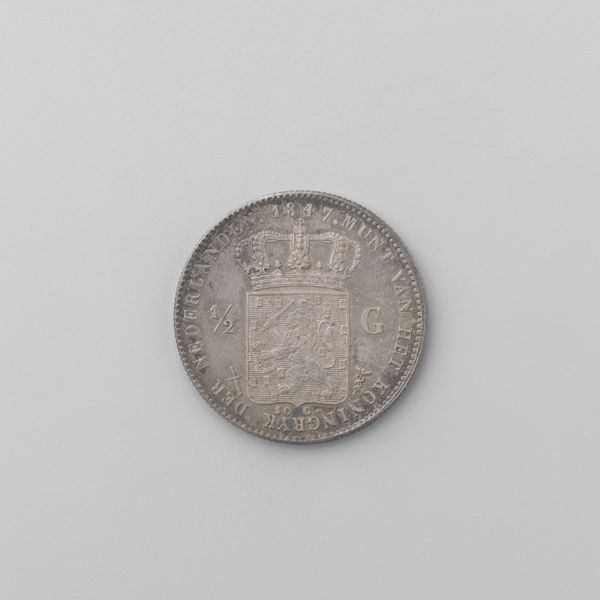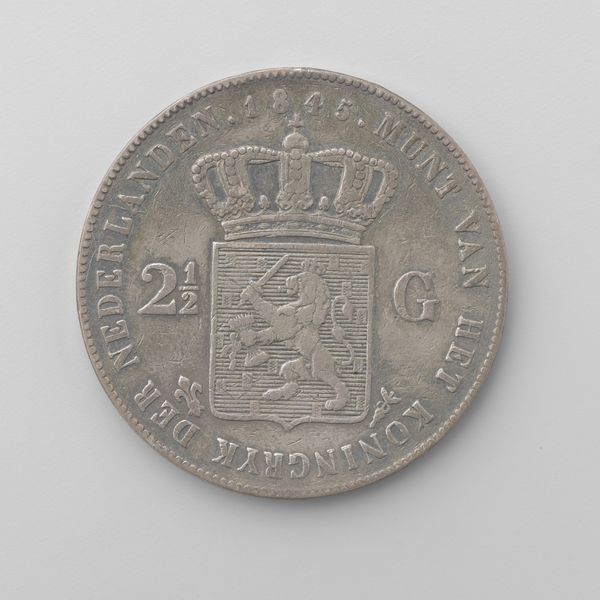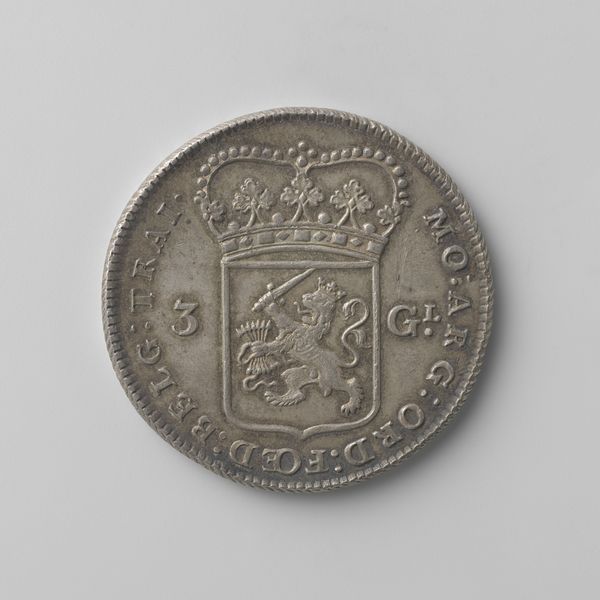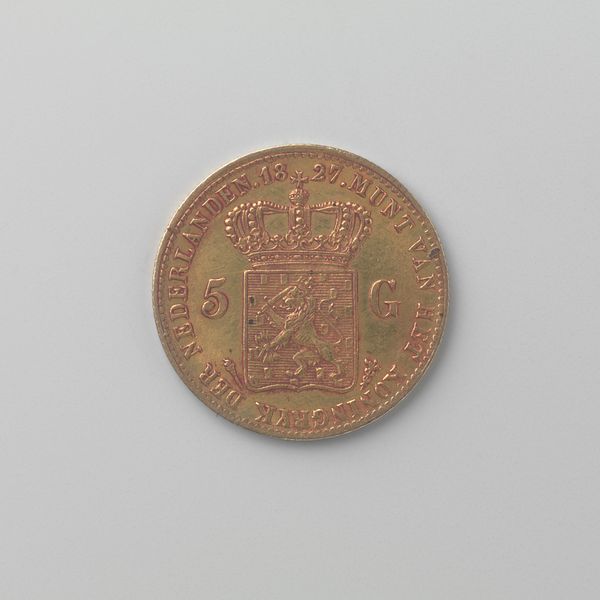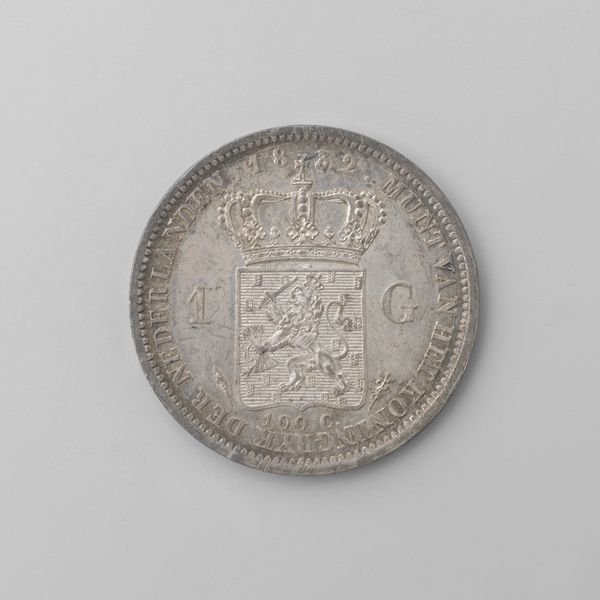
print, photography
#
portrait
#
still-life-photography
# print
#
classical-realism
#
photography
#
geometric
Dimensions: diameter 2.4 cm, weight 5.36 gr
Copyright: Rijks Museum: Open Domain
Curator: This is a photograph of a Dutch half-gulden coin, minted in 1829. The profile on the coin is of Willem I, King of the Netherlands at the time. The photograph itself is a modern print housed here at the Rijksmuseum. Editor: You know, even in monochrome, there's a sheen to it. I get this strange feeling of power and antiquity looking at this disc, like holding a tiny piece of a long-gone kingdom. All those ornate flourishes... it's like they're trying to contain something monumental within a tiny circle. Curator: And in a way, they were. Coinage is deeply tied to ideas of national identity and sovereignty. The very act of producing currency is a claim to power, an assertion of economic and political stability. The imagery—Willem's portrait, the heraldic lion—it's all carefully chosen to project authority. Editor: Right, that lion looks far from cuddly. I suppose it's doing its job! Though, there is a certain sadness to this particular coin—a symbol of wealth photographed to be in a museum, maybe because its spending power has dwindled into pure symbolic value? Curator: That's a poignant observation. Museums inherently alter an object’s context and function. What was once a medium of exchange, circulating within a society, now sits behind glass, becoming a static artifact that speaks more of history than finance. The value shifts from monetary to cultural. We use the object to speak about politics, monarchy and a bit of art. Editor: Like a fallen king! Once held high, now a curious relic... Anyway, coins were surely fascinating mini canvases back then, and still today, little circular stories circulating...Or in this case, on exhibit! I am so ready for lunch! Curator: Agreed, the lunch is definitely the best kind of currency at this point. Thanks!
Comments
No comments
Be the first to comment and join the conversation on the ultimate creative platform.
